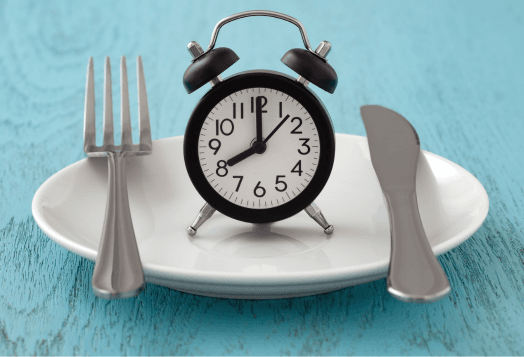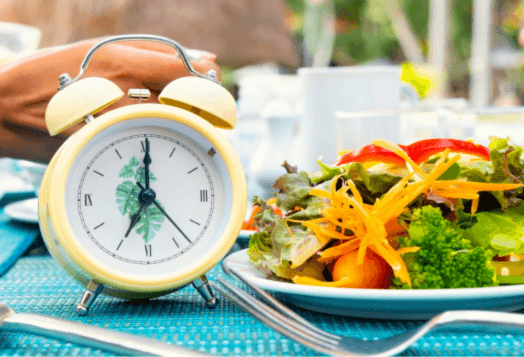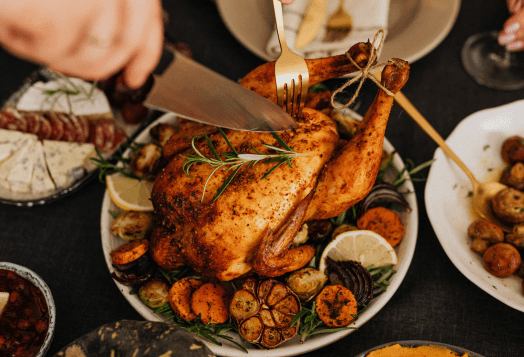
The internet loves intermittent fasting, but the results? Not always so lovable. That’s because fasting isn’t one-size-fits-all, especially for women. Whether you're new to it or already timing your meals with a stopwatch, this guide breaks down intermittent fasting for women into two clear paths: beginner and pro. See where you stand and how to level up safely and smartly.
What Is Intermittent Fastin g and Why Does It Matter for Women?
Intermittent fasting (IF) means eating within a specific time window and fasting during the remaining hours of the day. While many adopt it for weight loss, research shows fasting also improves insulin sensitivity, reduces inflammation, and may even support cognitive function.
But here’s what’s different for women: hormonal cycles. The female endocrine system can be more sensitive to calorie restriction, making the ‘right’ fasting approach highly individual. That’s why identifying your current lifestyle phase, beginner or advanced, is crucial.
Proven Intermittent Fasting Benefits for Women
When done right, intermittent fasting can support multiple areas of a woman’s health. Some key benefits include:
Fat loss and healthy weight management without extreme dieting.
Improved insulin sensitivity, which helps regulate blood sugar levels.
Reduced inflammation and enhanced digestive health.
Boosted metabolic health, including better cholesterol profiles.
Sharper mental focus and more stable daily energy levels.
Potential Risks and Downsides for Women
Despite the benefits, fasting may pose challenges for some women, especially if approached too aggressively:
Hormonal disruptions, including missed or irregular periods
Nutrient gaps, especially when meals aren’t well-balanced
Fatigue, sleep disturbances, or low energy if under-fueled
Always begin with a gentle intermittent fasting schedule for women and adjust based on your body’s feedback, especially during different phases of your cycle.
Beginner vs Pro: A Side-by-Side Comparison
Now that you know what intermittent fasting is and how it isn’t one-size-fits-all, here’s a quick glance at how beginners and pros approach it differently.
Use this table to identify where you stand and what habits match your current lifestyle.
Category | Beginner | Pro |
Fasting Window | 12:12 (12 hrs eating, 12 hrs fasting) | 16:8 or 18:6 (16–18 hrs fasting, 6–8 hrs eating) |
Best For | Women new to fasting, low activity, and hormonal reset | Experienced fasters, athletes, and body recomposition goals |
Schedule Example | Eat: 8 am–8 pm Fast: 8 pm–8 am | Eat: 12 pm–8 pm Fast: 8 pm–12 pm |
Workout Timing | Post-meal walk, light movement | Fasted cardio or pre-lunch strength training |
Training Focus | Yoga, body weight and walking | Resistance training, HIIT |
Meal Focus | Balanced plates with protein, carbs, and fats | High-protein, fibre-rich, low sugar |
Support Tip | Track energy, mood and sleep | Sync with the cycle, use refeed days for recovery |
Common Mistake | Skipping meals entirely | Overtraining while under-fueled |
Real-Life Intermittent Fasting Routine for Women at Different Levels
Theory is helpful, but real routines tell the full story. Let’s see how intermittent fasting looks day-to-day for two women at different stages of the journey.
The Journey of a Beginner

Mira 31, is a working professional who recently discovered intermittent fasting while searching for ways to improve her energy and digestion. She’s not chasing weight loss. She simply wants to feel less sluggish and reduce the constant snacking cycle she’s been stuck in.
Fasting Schedule: 12 hours fasting, 12 hours eating (8 AM–8 PM).
Activity Level: Light walks, occasional yoga.
- Primary Goal: Steadier energy, better digestion.
The Journey of an Experienced

Ayesha, 34, is a certified fitness trainer and mother of one. She’s been following a 16:8 schedule for nearly two years. Intermittent fasting has helped her maintain lean muscle, manage her energy, and align her meals with her workout schedule.
Fasting Schedule: 16 hours fasting, 8 hours eating (12 PM–8 PM).
Activity Level: Resistance training, strength-focused workouts
Primary Goal: Body composition, hormonal balance, metabolic flexibility
How Their Daily Intermittent Fasting Routine Plays Out
Fasting isn’t just about when you eat; it’s about what to eat during intermittent fasting to nourish your body properly. Let’s take a closer look at how Mira and Ayesha approach their meals without obsessing over strict food rules or trendy health fads.
Mira’s 12:12 Approach – Building Habits with Balance
Mira is still learning how to tune into her hunger cues and build a sustainable rhythm. Her focus is on eating well-rounded meals that give her energy and keep her full without overcomplicating it.
8:00 AM – Start of Eating Window
She begins her day with a meal that’s light but balanced enough to fuel her morning without leading to a crash an hour later.Example: A bowl of rolled oats with a spoonful of peanut butter, chia seeds, and sliced banana.
1:00 PM – Midday Meal
This is her most satisfying meal of the day. It’s rich in fibre, protein, and slow-digesting carbs that help her avoid that familiar 3 PM slump.
Example: A grain bowl with brown rice, sautéed vegetables, chickpeas, and a drizzle of olive oil.
7:00 PM – Final Meal Before Fast
Dinner is simple and easy to digest. Mira finishes eating by 8 PM to close her window, then switches to herbal teas or warm water.
Example: A warm bowl of soup made with lentils and vegetables, served with a small portion of wholegrain toast.
Mira isn’t aiming for perfection; she’s focused on stability. Her meals are about balance, not restriction.
Ayesha’s 16:8 Routine – Fueling Performance with Intention
Ayesha has been following intermittent fasting for a while, and her meals reflect her training schedule and overall lifestyle. Each plate is purposefully built to support strength, clarity, and hormone balance, similar to choosing the best foods to eat while fasting during Navratri.
12:00 PM – Breaking the Fast
She opens her eating window with a meal that combines lean protein, fibre, and healthy fats, enough to energise her without making her feel heavy.
Example: Grilled paneer or tofu with sautéed spinach, a small portion of millet, and a sprinkle of seeds.
4:00 PM – Optional Snack
If she’s had a high-intensity workout or just needs a boost, she includes a small snack to aid recovery and prevent overeating at dinner.
Example: A small bowl of unsweetened yoghurt with nuts and a few berries.
7:00 PM – Final Meal
Her dinner is early, balanced, and easy to digest, focused on post-workout recovery and ensuring restful sleep.
Example: Steamed or grilled seasonal vegetables served with lentil soup and a small portion of whole-grain flatbread.
Ayesha’s meals are intentional, designed around intermittent fasting plans for weight loss in women.
How They Navigate Through Challenges
Mira
She occasionally struggles with late-night cravings and often wonders if she’s ‘doing it right.’ Her biggest win so far? She realised that consistent hydration and balanced meals reduce her need to snack between meals.
Ayesha
Her challenge is syncing her fasting window with her menstrual cycle. On lower-energy days (especially premenstrual), she shortens her fast to 14:10 or adjusts meal timing to avoid fatigue and emotional dips. Over time, this has helped her avoid burnout.
How They Measure Progress
Progress in intermittent fasting for women is more than just weight loss; it’s about how your body feels, performs, and responds over time.
Mira noticed
Fewer afternoon crashes
Less bloating after meals
A more mindful approach to food
Ayesha noticed
Consistent muscle retention and recovery
Improved skin and sleep quality
Better focus during workouts and workdays
Which Journey Is Right for You?
The key is not to compare but to identify where you are now with guidance from nutritionists and dietitians. Mira’s routine is a gentle entry into intermittent fasting for women, looking to feel better and wanting a sustainable start. Ayesha’s approach is great if you’re comfortable with fasting, prioritising training, and understanding your body’s rhythms.
Disclaimer: The information provided is intended for general informational purposes only. It is not a substitute for professional advice or guidance. For personalised recommendations or specific concerns, please consult a certified professional.




